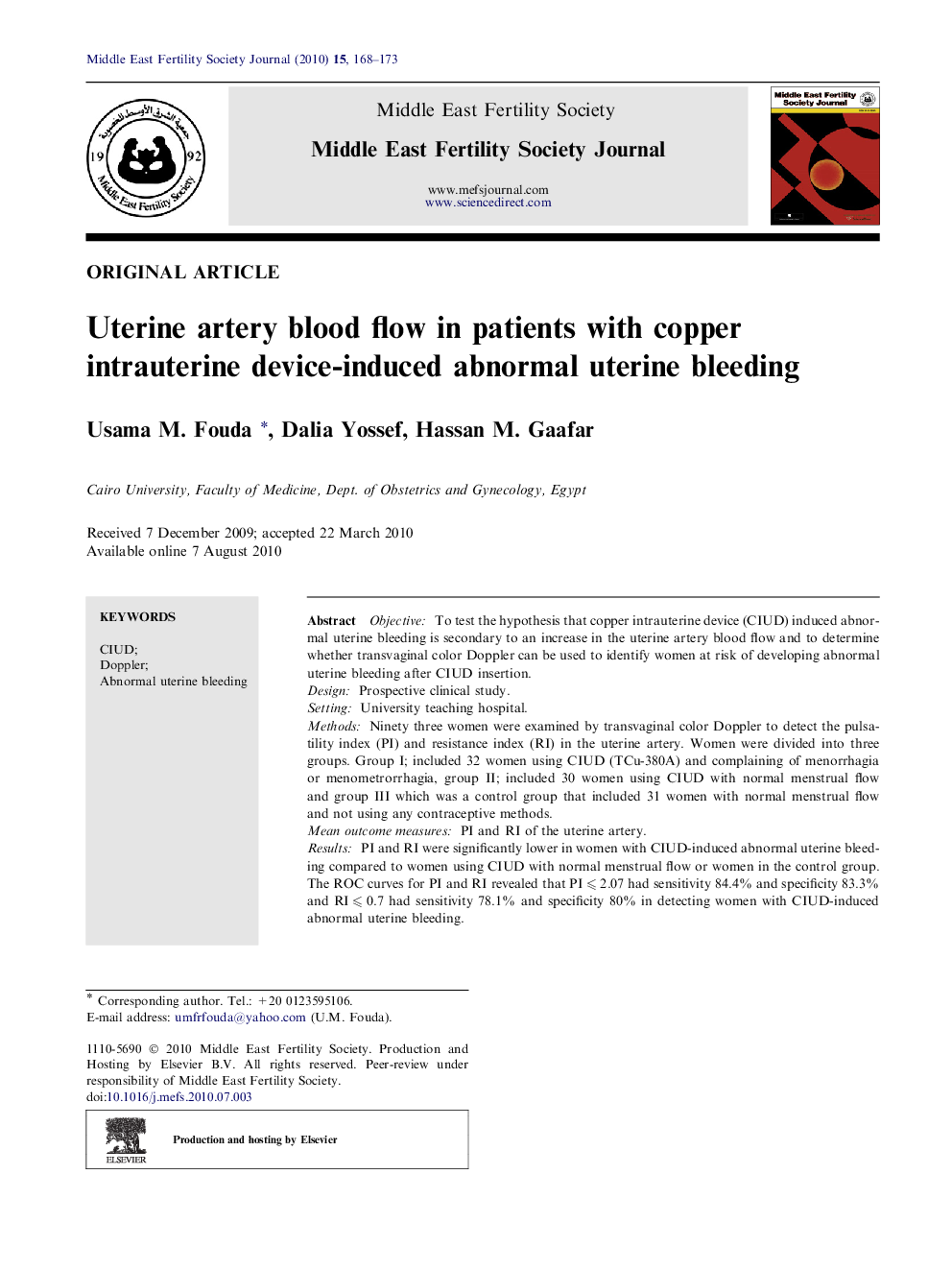| Article ID | Journal | Published Year | Pages | File Type |
|---|---|---|---|---|
| 3966416 | Middle East Fertility Society Journal | 2010 | 6 Pages |
ObjectiveTo test the hypothesis that copper intrauterine device (CIUD) induced abnormal uterine bleeding is secondary to an increase in the uterine artery blood flow and to determine whether transvaginal color Doppler can be used to identify women at risk of developing abnormal uterine bleeding after CIUD insertion.DesignProspective clinical study.SettingUniversity teaching hospital.MethodsNinety three women were examined by transvaginal color Doppler to detect the pulsatility index (PI) and resistance index (RI) in the uterine artery. Women were divided into three groups. Group I; included 32 women using CIUD (TCu-380A) and complaining of menorrhagia or menometrorrhagia, group II; included 30 women using CIUD with normal menstrual flow and group III which was a control group that included 31 women with normal menstrual flow and not using any contraceptive methods.Mean outcome measuresPI and RI of the uterine artery.ResultsPI and RI were significantly lower in women with CIUD-induced abnormal uterine bleeding compared to women using CIUD with normal menstrual flow or women in the control group. The ROC curves for PI and RI revealed that PI⩽2.07 had sensitivity 84.4% and specificity 83.3% and RI⩽0.7 had sensitivity 78.1% and specificity 80% in detecting women with CIUD-induced abnormal uterine bleeding.ConclusionThe results of our study confirm the hypothesis that there is an increase in the uterine blood flow (as indicated by decreased PI and RI in uterine artery) in women with CIUD-induced abnormal uterine bleeding.
